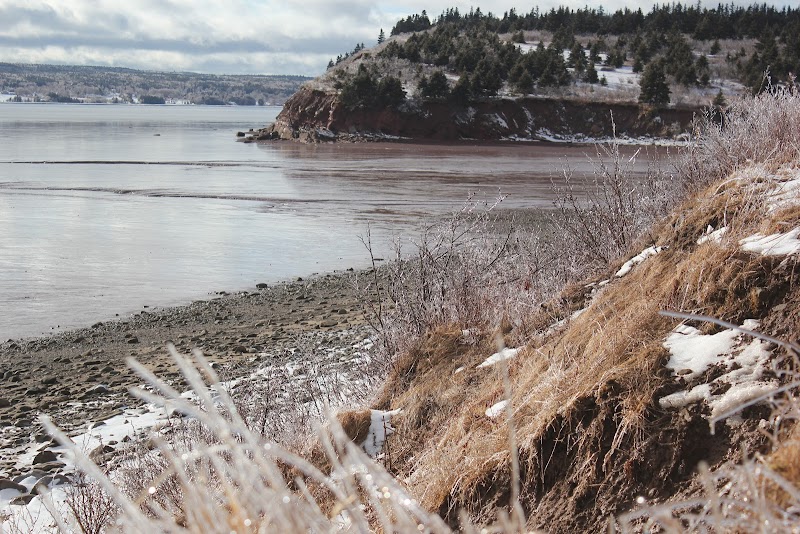
Tide and Terrain: Participating in Coastal Cleanup Days at Lawrencetown, Nova Scotia
Coastal Cleanup Days in Lawrencetown invite adventurers to tackle the shoreline’s challenges while making a tangible environmental impact. This guide details the terrain, timing, and preparation needed to engage responsibly with one of Nova Scotia's most dynamic coastal landscapes.
Start Early to Beat the Tide
Arrive early morning to maximize your cleanup time and avoid rising tides that can limit access to certain beach areas.
Wear Closed-Toe, Waterproof Footwear
Choose shoes with good grip to handle wet sand, rocks, and occasional sharp debris safely.
Bring a Reusable Water Bottle
Hydration is critical, especially with ocean winds that can mask dehydration symptoms.
Use Gloves for Handling Debris
Protect your hands from sharp shells, fishing hooks, and glass; gloves are usually provided, but bringing your own is recommended.
Tide and Terrain: Participating in Coastal Cleanup Days at Lawrencetown, Nova Scotia
When the Atlantic tide sweeps into Lawrencetown’s rugged coast, it brings with it both nature’s raw beauty and debris from afar. Coastal Cleanup Days here offer a chance for adventurers and locals alike to engage with this fiercely alive environment—an eco-mission framed by craggy shores, relentless currents, and the crash of surf that dares you to make a difference.
Lawrencetown Beach, beyond its reputation as a surfer's haven, becomes a frontline in the battle against plastic and litter during these community-powered events. The shoreline stretches approximately 2 kilometers, framed by dunes that battle the wind and offer moments of respite between collection zones. The terrain is straightforward: mainly sandy beaches, some rock outcrops, and patches of dune grass, making it accessible to casual walkers and seasoned outdoor minds alike.
The area demands awareness more than athletic prowess—pay close attention to rising tides and slippery rocks that challenge your footing. Timing is critical: cleanup efforts usually start in the cool morning hours to avoid midday heat and the surge of afternoon tides.
Practical preparation is key. Waterproof boots or sturdy shoes with grip help you traverse the wet sand and occasional slick stones. Layers keep you comfortable as salty breezes test your stamina. Hydration is a must; bring at least one liter of water in a reusable bottle to stay refreshed under changing weather. Gloves, provided upon arrival or brought from home, shield your hands from sharp shells and stray fishing lines.
During cleanups, nature isn’t a passive backdrop. The relentless waves push debris ashore, while the gulls circle overhead, curious yet detached. The wind carries stories from the open ocean, while the dunes stand their ground, curbing erosion and guarding nesting spots for local shorebirds.
Besides the hands-on environmental impact, Coastal Cleanup Days in Lawrencetown offer immersive encounters with the Atlantic’s pulse. Every bag of collected waste tells a larger story—of communities reaching across distances, and of an ecosystem fiercely asserting its presence.
To make the most of your visit, consider pairing cleanup days with a stroll into Lawrencetown’s nearby hiking trails or a visit to local cafes post-event, recharging with fresh seafood and shared stories. The coast rewards those who treat it with respect—not just those who seek its thrills.
Every pick-up of trash is a step toward restoration, every moment by the water a lesson in patience and persistence. Coastal Cleanup Days at Lawrencetown are more than a task; they are an invitation to witness and aid an environment that refuses to be tamed but can be helped.
Nearby Trips
All Adventures
Boat Charters
Water Activities
Adventures near Lawrencetown, Nova Scotia
Discover the unique and memorable adventures that make Lawrencetown, Nova Scotia special.
Frequently Asked Questions
What’s the best way to get to Lawrencetown Beach for the cleanup?
Lawrencetown Beach is accessible by car via Lawrencetown Road off Highway 207, approximately 30 minutes from Halifax. There's free parking near the surf shop, but during cleanup days, carpooling or public transit options might be recommended due to high turnout.
Are pets allowed during Coastal Cleanup Days?
Pets are generally discouraged during cleanup events due to the presence of potentially hazardous debris. If you bring a pet, ensure they are leashed and avoid areas with concentrated cleanup activity for their safety.
Can beginners participate in the cleanup?
Absolutely. The cleanup is designed to be accessible to everyone. Volunteers just need a willingness to help and basic mobility to walk the beach. Organizers provide instructions and necessary safety gear.
What wildlife might I encounter along the shore during the cleanup?
Look for seabirds such as gulls, terns, and oystercatchers, who inhabit the shore year-round. Depending on season, seals may be spotted offshore, while migrating shorebirds pass through during spring and fall.
Is there a local environmental impact beyond litter collection?
Yes, the cleanup contributes to habitat preservation, protecting nesting grounds for shorebirds and preventing plastics from entering marine food chains. It also raises community awareness and supports local conservation efforts.
Where are the lesser-known spots at Lawrencetown Beach worth exploring after a cleanup?
Venture east towards the rocky outcrops near Power Plant Park for panoramic views and tide pools. These areas often reveal unique marine life like sea stars and crabs, which are less frequented by casual visitors.
Recommended Gear
Waterproof Hiking Shoes or Boots
Protects feet from wet and uneven sandy terrain while providing enough grip on rocks and slick surfaces.
Reusable Water Bottle
Staying hydrated is crucial when exposed to salty breezes and outdoor exertion.
Gloves (Reusable or Provided)
Essential for safe handling of potentially hazardous materials during cleanup.
Layered Clothing
Helps regulate body temperature amid variable coastal weather with winds that can quickly chill.
Local Insights
Hidden Gems
- "Power Plant Park tide pools east of Lawrencetown Beach"
- "Quiet dunes at the far west end where local shorebirds nest"
Wildlife
- "Ring-billed gulls"
- "Harlequin ducks offshore"
- "Harbor seals"
- "Sanderlings during migration"
History
"Lawrencetown's coastline has long been a gathering place for Indigenous Mi’kmaq communities and later became a fishing and shipbuilding hub during European settlement, adding cultural layers beneath modern beach life."
